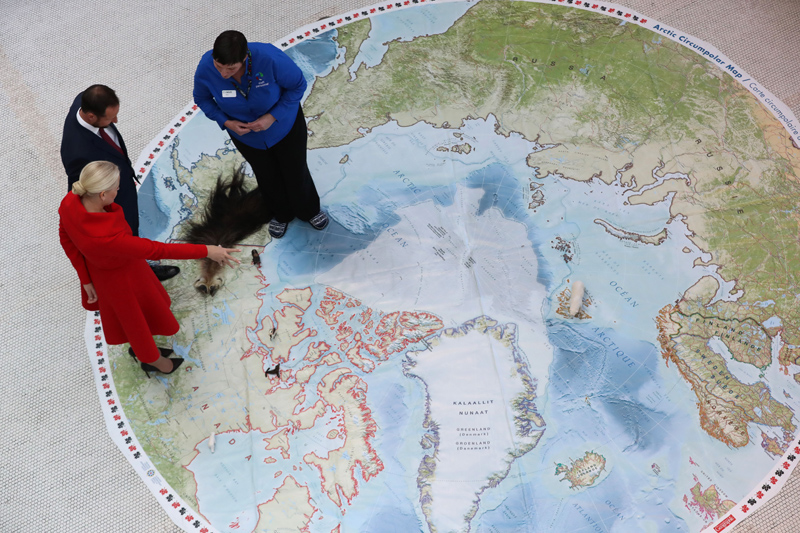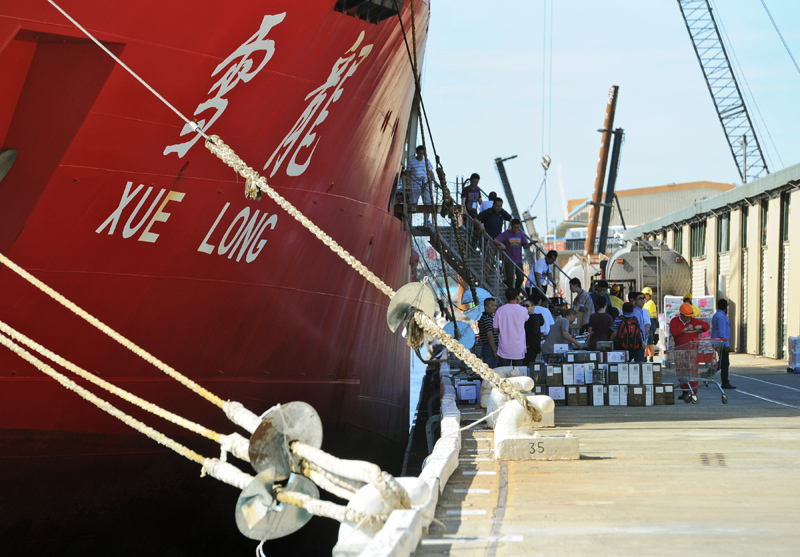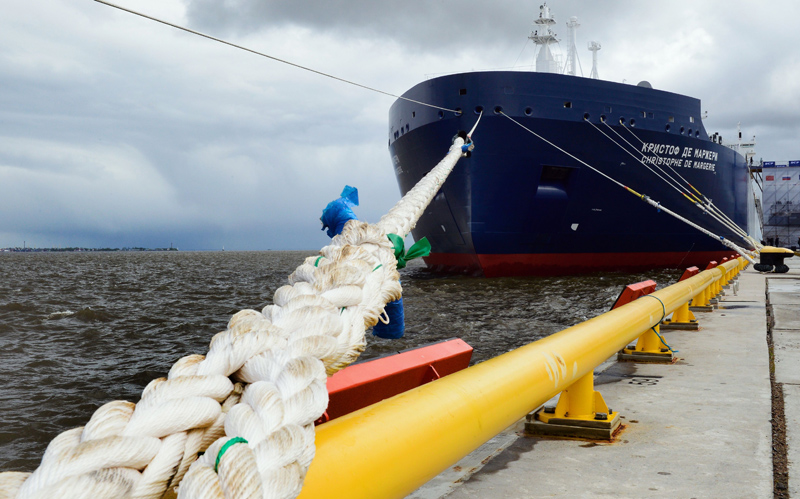The Role of History and Law in the South China Sea and Arctic Ocean
Justin D. Nankivell (Daniel K. Inouye Asia-Pacific Center for Security Studies) argues that the evolving relationship of history, treaty law for UNCLOS, and customary international law may set the stage for contention in the South China Sea to dredge up historical problems surrounding the politics of international law in the Arctic Ocean.
The law of the sea regime is in the early phases of a significant shift and subject to increased tension in its central normative structure. This has been the case many times historically, with each phase of the law moving in a path-dependent fashion through different international political environments. Though the law of the sea today has greater impact and causal effect on strategically driven state conduct than at any other point in history, evidence for this emerging change in the maritime legal regime is materializing in several key domains. Major states are now grappling with how to reason with, apply, and ultimately enforce the law of the sea as the great wheel of power winds forward in the Asia-Pacific. Concurrently, many states have different interpretive understandings of the authority of the law of the sea, which invariably lead to different strategic outcomes in foreign policy decision-making and maritime practice. For example, by virtue of different strategic cultures, U.S. foreign policy remains firmly grounded, guided, and even highly determined by the central principles of the law of the sea, while Chinese noncompliance with international law in the South China Sea is trending negatively and is indeterminate in key areas where China bears international legal obligations.
Against this backdrop lie numerous states’ particular “ideas of history”: domestic narratives that continue to reconstitute the relationship of law and territorial entitlement to maritime domains. Nowhere are these narratives more deeply entrenched than in the Arctic Ocean, where both Canada and Russia believe that they “own” their Arctic waters in much the same way that China understands its “ownership” of the South China Sea. Just as China’s historical claim was challenged by the South China Sea arbitration, so Russia’s and Canada’s claims may be correspondingly held under greater scrutiny by the arbitration’s jurisprudential effects. In the wake of the tribunal’s decision, any claim to maritime jurisdiction that is based in history will be newly evaluated against the United Nations Convention on the Law of the Sea (UNCLOS) as treaty law. This new episode in the evolving relationship of history, treaty law for UNCLOS, and customary international law may set the stage for contention in the South China Sea to dredge up historical problems surrounding the politics of international law in the Arctic Ocean.

Philippine President Rodrigo Duterte answers questions following his inspection of Japan’s coast guard drills in Yokohama on October 27, 2016. (Kazuhiro Nogi/AFP/Getty Images)
HISTORIC RIGHTS AND TITLE AFTER THE SOUTH CHINA SEA ARBITRATION
In the South China Sea arbitration award for the dispute between the Philippines and China in July 2016, the law of historic rights, historic title, and the broader expanse of states’ ownership of the oceans became central in evaluating what sovereignty may mean in modern maritime relations. In international law, a historic title refers to a particular claim by a state that it has sovereignty over a body of historic waters akin to a claim of sovereignty over internal waters in which consent to enter must be granted. Historic rights refer to certain entitlements by states, short of sovereignty claims, to carry out functional types of practices (e.g., fishing, resource extraction) by virtue of a state’s long-standing and authoritative activities that have been acquiesced to by other states. The South China Sea arbitration not only weighed in on whether the legal regime of historic rights applies to conventional treaty law contained in UNCLOS and how China’s legal claim of deliberate historical ambiguity is situated within this relationship, but the case also set out distinct obstacles to states’ invocation of historic title to ocean areas beyond traditional coastal waters. History has, in a certain sense, been dealt a blow by the arbitration, and controversially so. The South China Sea case reveals that those who believe that historic waters and rights can exist either alongside or in complement to UNCLOS bear a higher standard of proof than previously existed in law. This new interpretation of the role of history in the law of the sea regime now structures the South China Sea dispute, raising policy-relevant questions of whether China will continue to act as if its historic rights remain valid within the nine-dash line. But China is not the only state that claims a special historical relationship to maritime space. Sovereignty over other key sea lanes, including those traversing the Arctic Ocean, has been indirectly affected as well.
Both Canada and Russia claim vast expanses of the Arctic Ocean as sovereign waters on the basis of historic title. Their claims are tantamount to an “internal waters” claim, subjecting Arctic waters to Canadian and Russian sovereignty, including a requirement of consent for foreign states to enter. The authority and legitimacy of these historical claims has, to some extent at least, been called into question by the South China Sea arbitration. To be clear, it is not the case that the Canadian and Russian Arctic claims have been necessarily rendered legally invalid via the precedential nature of the ruling. The particularities of each case and how the legal argument is assembled against the validity of oceans law will be determinate in any legal international proceeding. Yet the power of history to supersede the authority of UNCLOS has undeniably shifted. In the 1970s and 1980s, when Arctic claims first took shape, sovereign entitlement based on historical claims was a politically powerful discourse on the law of the sea. In fact, the role of historic rights to ocean resources, fishing, and navigation remained central to maritime jurisprudence even up through the early 2000s. But today that framework is changing. The direction of change lends credibility to the long-standing position of the United States and European Union that historically based Canadian and Russian claims to Arctic sovereignty are incompatible with UNCLOS. Though this argument has traditionally been a matter of controversy, the arbitration decision has narrowed the scope of the debate over the status of historic title vis-à-vis the UNCLOS regime. Russia, for example, may in the future adjust its strategic calculations to strengthen its own claims within the new jurisprudential parameters established by the ruling, particularly given the fact that its claims may be affected by this narrowing of the law’s interpretive scope. Such a process highlights the fact that the politics of international maritime law are likely to undergo a strategic shift as powerful states make policy trade-offs and engage in issue-linkage politics in order to diplomatically legitimize their maritime claims.

A Norwegian delegation visits the Canadian Museum of Nature in Ottawa, Ontario, November 7, 2016. (Lars Hagberg/AFP/Getty Images)
Before considering the policy and operational implications of the South China Sea arbitration, it is worth recalling the tribunal’s conclusions in the case on historic rights and title. The Philippines asked the tribunal to rule on whether China’s maritime rights and entitlements in the South China Sea, whether formed directly by the nine-dash line or another corresponding legal argument, either were consistent with or extended beyond the geographic and substantive limits of UNCLOS. Further, could China’s claim to the South China Sea be exempted from the tribunal’s jurisdiction, as Beijing claimed, on the basis of the exceptional clause of article 298(1)(a)(i), which allows states to opt out of disputes involving historic bays or titles?
The justices were clear on these points. In concluding that the case was not distinctly about specific historic rights but a broader question of the relationship of historic rights to UNCLOS, the tribunal asserted jurisdiction given the centrality of UNCLOS to the law of the sea regime. On the issue of whether China may have been making a claim through the nine-dash line to historic title (full sovereignty) or historic rights, the justices found that because China had never sought to restrict navigational rights with the geographic limits of the nine-dash line (as evidenced through verbal pronouncements), it followed that China has never considered the maritime area to be either internal waters or a portion of its territorial sea. Thus, it could not have been making a claim to historic title, which leaves open only the possibility of a historic rights claim within the nine-dash line. Given that China had offered through its national oil company (CNOOC) petroleum blocks for bidding within the nine-dash line and beyond 200 nautical miles of a Chinese-claimed feature, demonstrated against other states (the Philippines, in particular) who similarly awarded blocks in overlapping areas, and declared a seasonal fishing ban in the South China Sea on the basis of Chinese jurisdiction, it followed that the nine-dash line could only be a claim to historic rights. To the question of whether such historic rights could supersede the rights of coastal states, the tribunal responded negatively: when China acceded to UNCLOS, all historic rights that it may have had to fishing, natural resources, or historical transit were superseded by the limits of UNCLOS’s maritime jurisdictions. Where the tribunal deviated from a sweeping claim was over nonexclusive traditional (historic) fishing rights. Here, it concluded that such fishing rights extend to artisanal fishing and could potentially be preserved even within another state’s territorial waters.

The Chinese icebreaker Xue Long at Fremantle Habour, Australia, on March 21, 2014. (Greg Wood/AFP/Getty Images)
Some international lawyers, from both Western and Eastern legal backgrounds, have pushed back on the tribunal’s reasoning. Though their claims vary, some argue that historic rights, as lex specialis—situations in which a specific law overrides a more general international law—are derivative of a particular legal regime and cannot be superseded by a treaty absent an express treaty provision; that historic rights are general international law and exist alongside UNCLOS; or that a range of international jurisprudence supports the retention and legal stature of historic rights. Regardless of the merits of these claims, the role of historic rights has been given less prominence than UNCLOS when the two appear to be in conflict. But what of historic title? The tribunal dealt with historic title only on the margins of the arbitration award. Here it noted that though UNCLOS makes reference to historic title in several areas of the treaty, historic title refers to maritime sovereignty derived from “historical circumstances.”
LIMITS TO HISTORIC RIGHTS AND TITLE IN THE ARCTIC
With respect to the role and impact of the South China Sea arbitration on Arctic claims, two primary questions arise. First, how does the issue of historic rights and title apply to long-standing Arctic claims? Second, what changes will the South China Sea jurisprudence likely produce in terms of major states’ strategic, material, and ideational interactions?

Canadian naval vessels HMCS Summerside (L) and HMCS Fredericton (R) patrol the Arctic on August 11, 2007 as part of Operation Nanook. (Michel Comte/AFP/Getty Images)
Consider first the legal implications of the award for Arctic sovereignty claims. For several decades, Canada and Russia have been building legal cases for sovereignty over Arctic waters on the basis of historic entitlement; these are structurally compounded legal arguments that bear a degree of resemblance to China’s legal reasoning in the South China Sea. Canada’s and Russia’s claims are largely congruent with one another, and both consist of multiple, layered legal arguments intended to produce the most comprehensive defense possible. (The similarities are discussed in my forthcoming article in the journal Ocean Development and International Law, “Historical Exceptionalism in International Law: Canada’s Strategic Use of Law in the Arctic Ocean.”) The common thread that runs between the Canadian and Russian defenses is a claim to historic title as grounded in practice. That is, by virtue of consistent historical usage, exclusive authority, the physical occupancy of Inuit peoples (in Canada’s case), the material or territorial role of the ice, and even environmental necessity, the Arctic waters of the Canadian archipelago and outer Russian islands of the Northern Sea Route are designated sovereign internal waters enclosed by straight baselines. Both states require prior consent for foreign transit, and neither permits innocent passage.
For well over 50 years, many states, including the United States and the EU, have rejected both historical claims as legally invalid. Though the issues are inherently complex, essentially the United States and EU argue that the Arctic’s Northwest and Northeast Passages are international straits by virtue of both geography and historical transit volume. Consistent with this status, the U.S. and EU positions are that all international transit rights apply and no consent is owed by the flag state. In broader terms, there is significant U.S. opposition to sovereignty claims made on the basis of historic title in any form. In particular, the United States objects to Canada’s use of straight baselines, which it argues are clearly unjustified under UNCLOS and cannot be legitimized by historical use. For the United States, EU, and probably all other major navigating powers in the Asia-Pacific, including China, Japan, South Korea, and India, the Arctic is subject to freedom of the high seas, limited only by environmental provisions covered either by the International Maritime Organization regulations or under the restrictive environmental authorities granted to coastal states over ice-covered areas of sea by Article 234 of UNCLOS.

The Russian Arctic Liquid Natural Gas tanker Christophe de Margerie following its naming ceremony in Saint Petersburg on June 3, 2017. (Olga Maltseva/AFP/Getty Images)
The challenge from the arbitration to Canada’s and Russia’s historic Arctic claims is subtle but meaningful. In considering China’s historic entitlements in the South China Sea, the tribunal continued to rely on the idea that the burden of proof falls on the claimant state to prove historic title. To meet the threshold burden, the coastal state must satisfy three traditional tests: (1) an effective exercise of authority over the waters, (2) proof of continuous exercise of such authority, and (3) acquiescence by other states to the claim, particularly those most affected. The tribunal ruled that historic title over maritime areas should be considered “exceptional” in international law, thereby reducing the scope of state claims to a reasonable, limited number. True, the jurisprudential benchmark for future cases will likely be that all claims to historic waters must be decided based on their unique circumstances rather than run strictly through the three-part test. However, the following language by the tribunal likely establishes the foundational basis on which Russia’s and Canada’s particular claims will be evaluated:
In the South China Sea arbitration, paragraph 238, the tribunal wrote:
Where the Convention does not expressly permit or preserve a prior agreement, rule of customary international law, or historic right, such prior norms will not be incompatible with the Convention where their operation does not conflict with any provision of the Convention, or to the extent that interpretation indicates that the Convention intended the prior agreements, rules or rights to continue in operation.
In plain terms, the tribunal notes that agreements, rules, and rights that existed before UNCLOS entered into force continue to exist only if they satisfy one of two conditions: (1) these prior rights can be exercised without interfering with the application of UNCLOS rules, or (2) the negotiators at UNCLOS intended prior rights to continue despite the treaty coming into force. It is hard to see how the first condition can be met, either in the South China Sea or in the Arctic. In both cases, historically based claims clearly make it impossible to exercise flag-state authority and navigational rights as laid out in UNCLOS. Hence, the larger context within which the arbitration will be applied to Arctic claims turns on how states behave, both operationally and through policy. State behavior will either confirm or deny the status of the convention vis-à-vis prior rules and rights. Moreover, the weight of state policy on this question will determine the value of UNCLOS as a modern piece of international law in guiding state conduct. The tribunal appears to allow historic title in principle, as long as it does not conflict with the convention. However, the tribunal does not answer the question of where historic title might exist, or even whether, with certainty, there are any instances of valid claims to historic title globally. The award only clarifies that future claims to historic title can be lawful on one of two bases: either these titles were “intended to continue in operation” by the convention or they do not conflict with its provisions. Both arguments—that UNCLOS intended historic title to continue or that historic title does not interfere with its rules—are difficult to legally substantiate.

Canada’s Ellesmere Island, photographed from a NASA research aircraft on March 29, 2017. (Mario Tama/Getty Images)
The problem for Canada and Russia going forward is that the jurisprudence on historic title now appears to tilt in favor of freedom of navigation and strong flag-state rights at the expense of coastal rights established via historical claim. In the long historical arc of the law of the sea as a continuous negotiation between coastal and ocean-going states, the arbitration’s judges scored a small victory for the latter beyond the firm entrenchment of exclusive economic zone (EEZ) rights in halting the law’s momentum toward being subject to states’ “territorial temptation”: the sovereign impulse to occupy the sea.
POLICY IMPERATIVES OF THE NEW LEGAL LANDSCAPE
While this issue may be interesting for international lawyers, real implications arise for those involved in maritime policy. The relevance of history was undercut by the award, but the tribunal’s judgement highlights state “interpretation” as a determinant of the validity of historic title claims. For that reason, the judgement incentivizes states with historical claims to demonstrate that their interpretation of and ascension to UNCLOS was not intended as a repudiation of their claim. The most effective and persuasive way for a state to clarify its interpretation of a rule is to implement it in both policy and operations. As a result, Russia has much to gain and nothing to lose by underlining its own belief in the continuation of historic title via robust practice to assert its rights, as it understands them. Furthermore, coordinated policy and operations by these major maritime states will carry particular normative value. While it is unclear how Russia and China will adapt their policy and operations in the wake of the ruling, we can speculate about possible outcomes based on how incentives drive state practice.

Russian President Vladimir Putin (L) and Prime Minister Dmitry Medvedev (R) visit an ice cavern on Alexandra Land Island on March 29, 2017. (Alexey Druzhinin/AFP/Getty Images)
Let us assume that China will not abandon its historic waters claim over time, and that it will continue to attempt to regulate transit in the South China Sea in some form for certain types of vessels and under certain strategic and political circumstances. Let us also assume that the Arctic ice continues to melt at a destructive pace, allowing more vessel transit and catalyzing interest in Arctic resource extraction. In order to preserve its claim against current jurisprudence and global pressure, Russia will need to undertake continuous demonstrations of its rights, ideally aided by an international partner. Although Canada will reflexively align with Russia given the similarities in their legal arguments, it is unlikely to prove sufficiently effective. This is because of Canada’s limited power (hard and soft) and poor diplomatic relations with Moscow. As an active and willing partner in substantiating the validity of history in international maritime law, China will provide an obvious opportunity for Russia. And critically, the feeling will no doubt be mutual. China too will need a reliable partner to underpin its legal position with respect to the right of coastal states to regulate transit in historically defined areas. The opportunity for China and Russia to engage in issue-linkage politics will be clear, particularly when either state’s historical legal claim is directly challenged. Such confrontation might come as a reaction to Chinese drilling in foreign EEZs, for example, or China’s stronger and more complete enforcement of its unilateral fishing ban in the same areas. In either circumstance, the claim that history has been negated via the arbitration will come up against Chinese practice to the contrary. These two visions of law are set to collide and cannot be reconciled.
Chinese and Russian coordinated policy on the law of the sea regime may deliver the result that freedom of navigation becomes threatened as a matter of principle, not geography. This state of affairs is the logical extension of China’s, Russia’s, and Canada’s insistence on consent-based transit regimes in their historic waters. Under such an eventuality, the entire global sweep of contentious international legal claims involving history may be subject to renewed scrutiny. The United States has always been poised to formally challenge Canada’s legal claim if navigational prohibitions in the Canadian Arctic archipelago restrict transit rights in an international strait. The EU as a bloc, and perhaps the United Kingdom in particular, will likely side with the United States in this move. Both the United States and the EU remain the strongest advocates for the foundational principle of freedom of navigation, and neither has an interest in preserving the concept of historic waters, not having to defend such claims of their own. Both believe that the South China Sea arbitration was a progressive ruling in the law of the sea regime, giving clarity to the rights and obligations that make up the international maritime order. If the existence of historic title, either in principle or in specific application, becomes a contentious issue for international politics, we may expect the formation of communities of interest among like-minded states to take shape as coordinated policy or operations. These juxtaposed communities of interest might tenuously bind claimants to the Arctic and China, their counterpart in the South China Sea. The United States, EU, Japan, South Korea, and India are likely to oppose this grouping, given that history has been legally upended and the scope of navigational freedoms curtailed. In this way, the South China Sea arbitration may have potentially reconfigured international relations with respect to maritime law and policy.
Justin D. Nankivell is the Associate Dean for Academics at the Daniel K. Inouye Asia-Pacific Center for Security Studies. The views expressed in this article are those of the author and do not necessarily reflect the official policy or position of the Daniel K. Inouye Asia-Pacific Center for Security Studies, the U.S. Department of Defense, or the U.S. government.
Download a pdf version of this analysis piece here.
Banner Image: © Olga Maltseva/AFP/Getty Images. The Russian Navy icebreaker Ilya Muromets at its launching ceremony in Saint Petersburg on June 10, 2016.



